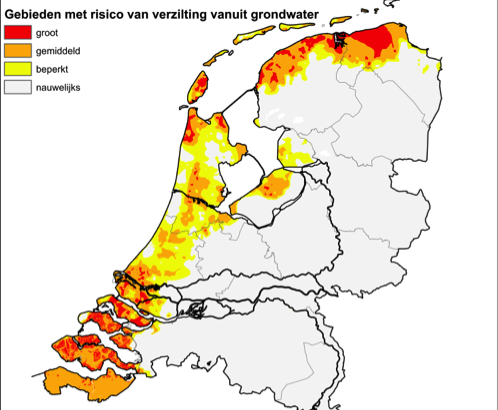Posted on 7 March, 2022

97.5% of all water on earth is saline. Unfortunately, it happens more and more that saline water causes problems on land. The process is called salinization and can happen in groundwater, surface water like rivers/streams or lakes, or in the soil.
This salinization can occur in groundwater, surface water or on land due to, among other things, rising sea levels combined with subsiding land and falling groundwater
disturbs the balans between saline and fresh water. The pressure of the saline sea water increases while the counter pressure of the fresh
water decreases. Lower lying lands, and particular polders become prone to artesic brackish groundwater surfacing.
Irrigation, where a substantial part of the water evaporates, leaves salt behind. The more saline the water or the more arid the conditions,
the larger this effect. Also groundwater, specifically fossile groundwater, contains minerals that get deposited on the soil, resulting in salinization.
In addition, infrastructural projects can cause permanent disturbances between layers of saline, brackish and fresh groundwater present in the soil.
The influx of seawater into our waterways due to reduced rainwater levels also has a direct effect on drinking water production and irrigation of agricultural areas.
In short, it is important for agriculture, construction works, drinking water production and for nature in general that the degree of salinization and the seasonal and weather influences are properly mapped out.
For groundwater, this also concerns the relationship between groundwater levels and the degree of salinization. Because salt and fresh water do not mix well, it is often important to measure at different depths to see the salt/fresh gradient.
With the QU series of water quality sensors, salinity can be measured on a large scale. Together with the LV series of level meters, a complete image can be made of the salinization of groundwater.